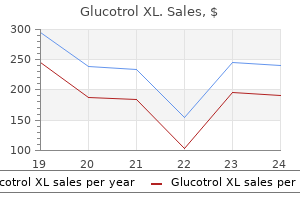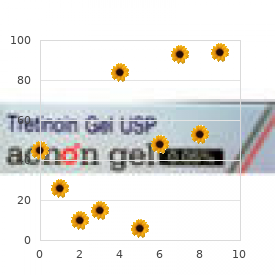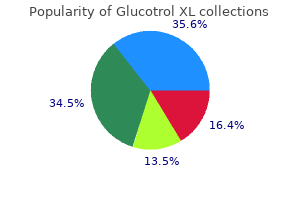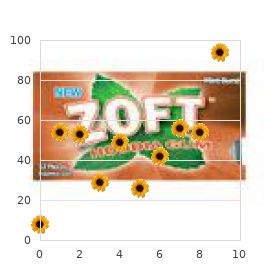Only $0.28 per item
Glucotrol XL dosages: 10 mg
Glucotrol XL packs: 60 pills, 90 pills, 120 pills, 180 pills, 270 pills, 360 pills
In stock: 601
10 of 10
Votes: 245 votes
Total customer reviews: 245
Description
Helicobacter pylori infection and oesophageal cancer risk: association studies via evidence-based meta-analyses diabetes questionnaire glucotrol xl 10 mg cheap. Nonsteroidal antiinflammatory drugs and the esophageal inflammation-metaplasiaadenocarcinoma sequence. Use of anti-inflammatory drugs and lower esophageal sphincter-relaxing drugs and risk of esophageal and gastric cancers. Prognostic significance of cyclinD1 amplification and the co-alteration of cyclinD1/pRb/ppRb in patients with esophageal squamous cell carcinoma. Prognostic significance of biologic factors in squamous cell carcinoma of the esophagus. Expression of p53 and p21 is useful for the prediction of preoperative chemotherapeutic effects in esophageal carcinoma. Prognostic significance of p21 expression in patients with esophageal squamous cell carcinoma. Bcl-X expression in esophageal squamous cell carcinoma: association with tumor progression and prognosis. Expression of survivin in esophageal cancer: correlation with the prognosis and response to chemotherapy. Vascular endothelial growth factor is a useful predictor of postoperative distant metastasis and survival prognosis in esophageal squamous cell carcinoma. Cyclooxygenase-2 expression is related to prognosis in patients with esophageal squamous cell carcinoma. Association of fibroblast growth factor receptor 1 gene amplification with poor survival in patients with esophageal squamous cell carcinoma. Expression of angiogenic factors predicts response to chemoradiotherapy and prognosis of oesophageal squamous cell carcinoma. Prognostic significance of stromelysin-3 and tissue inhibitor of matrix metalloproteinase-2 in esophageal cancer. Matrix metalloproteinase-7 and matrix metalloproteinase-9 are associated with unfavourable prognosis in superficial oesophageal cancer. Systematic review and meta-analysis of tumor biomarkers in predicting prognosis in esophageal cancer. A decade of exploring the cancer epigenome-biological and translational implications. Genomic and Epigenomic Aberrations in esophageal squamous cell carcinoma and implications for patients. Genetics in the pathogenesis of esophageal cancer: possible predictive and prognostic factors. Cetuximab with concurrent chemoradiation for esophagogastric cancer: assessment of toxicity.

Stizolobium hirsutum (Cowhage). Glucotrol XL.
- Are there any interactions with medications?
- Are there safety concerns?
- Dosing considerations for Cowhage.
- How does Cowhage work?
- What is Cowhage?
Source: http://www.rxlist.com/script/main/art.asp?articlekey=96981
The incidence of gastric cancer in males is approximately twice that in females (Table 54 diabetes symptoms log proven glucotrol xl 10 mg. Native Americans and Hispanics also have a higher risk of developing gastric cancer than whites. The dominant risk factor remains, however, infection with Hp and the associated chronic-active inflammation of the gastric mucosa (see Chapter 52). This type of gastric cancer is more closely linked to environmental and dietary risk factors, tends to be the predominant form in regions with a high incidence of gastric cancer, and is the form of cancer that is now declining worldwide. The diffuse type of cancer lacks glandular structure and consists of poorly cohesive cells that infiltrate the wall of the stomach. Extensive involvement of the stomach by the diffuse type can result in a rigid and thickened stomach, a condition referred to as linitis plastic (Video 54. Another key feature of diffuse type cancers are signet-ring cells, special mucin-filled cells that are not present in intestinal type adenocarcinomas. There are also mixed phenotypes that contain heterogenous areas that feature predominantly either intestinalor diffuse-type characteristics. Characterization of the gastric cancer genomic landscape reveals the presence of multiple alterations in the expression of tyrosine kinase receptors, which in conjunction with their ligands and downstream effector molecules represent potential pathways for future drug development. So far, there are only little data to support the biological relevance of this proposed classification. Previous transcriptome analyses of gastric cancers, on the other hand, have demonstrated phenotypic clusters with either distinct prognostic outcomes or different response to systemic treatment. In colon cancer, the evidence is strong that each step in the transition is associated with a specific gene mutation,14 but the evidence that gastric cancer follows a comparable sequence of genetic events has been lacking. A common feature of the initiation and progression to intestinal-type gastric cancer is chronic inflammation of the gastric mucosa. Although animal models suggested that all stages prior to the development of high-grade dysplasia are potentially reversible, there is still ongoing debate what defines the "point of no return" for humans from which further progression of neoplasia can no longer be prevented. These stromal cells, which also include cancer-associated fibroblasts known to promote tumor growth, have been reported to show distinct genetic and epigenetic changes that may confound tumor analysis. A, the intestinal type of gastric adenocarcinoma is characterized by the formation of gland-like tubular structures mimicking intestinal glands. B, the diffuse type of gastric cancer contains singly invasive tumor cells that frequently contain abundant mucin and that lack any glandular structure. In well-differentiated, intestinal-type gastric cancer, histopathologic studies indicated that chronic Hp infection progresses over decades through stages of chronic gastritis, atrophic gastritis, intestinal metaplasia, dysplasia, and cancer. An imbalance between epithelial cell proliferation and apoptosis and, in a milieu of atrophy and achlorhydria, gastric colonization by enteric bacteria with nitrate reductase activity facilitating formation of carcinogenic nitrosamines allow the accumulation of oncogenic genetic alterations. Corpus-predominant atrophy, or the loss of specialized glandular cell types such as parietal and chief cells, appears to be the critical initiating step in the progression toward cancer. Infection with Hp has been found in every population studied, although the prevalence is higher in developing countries and most parts of East Asia. The risk for gastric cancer development varies with the type of background gastritis, but in general, corpusdominant gastritis resulting in a low acid state is mainly associated with an increased risk.

Specifications/Details
In older series of patients who had esophagectomy performed because endoscopic biopsies revealed high-grade dysplasia in Barrett esophagus diabetes type 1 life expectancy 10 mg glucotrol xl free shipping, invasive cancer was found in as many as 30% to 40% of the resected esophagi. A number of advanced imaging techniques have been used to facilitate the detection of dysplasia and early cancer in Barrett esophagus, including chromoendoscopy, autofluorescence endoscopy, magnification endoscopy, narrow band imaging, optical coherence tomography, Raman detection methods, confocal laser endomicroscopy, and volumetric laser endomicroscopy (see Chapter 48). However, gastroenterology societies do not mandate use of these advanced imaging techniques in routine clinical practice, and careful endoscopic examination with highdefinition white-light endoscopy and random 4-quadrant biopsy remains the standard of care. The overall incidence of cancer development in patients with nondysplastic Barrett esophagus is approximately 0. One study suggests that patients who have non-neoplastic Barrett esophagus develop low-grade dysplasia at the rate of 4. In one study, 2 expert pathologists reviewed pathology slides in 147 patients in whom low-grade dysplasia had been diagnosed at community hospitals in the Netherlands; the experts confirmed the diagnosis in only 15% of cases. In contrast, an American study of 210 patients with low-grade dysplasia followed for a mean of 6. This practice is based on indirect evidence suggesting that acid reflux promotes carcinogenesis in Barrett metaplasia and that aggressive control of acid reflux might interfere with carcinogenesis. The results of these analyses are inconclusive, and, if fundoplication has any cancer-preventive benefit over medical therapy, that potential advantage to an individual patient is small and does not clearly justify the risks of antireflux surgery. We do not feel that antireflux surgery should be performed solely for cancer prevention in patients with Barrett esophagus. However, patients with Barrett esophagus often have cardiovascular disease and/or cardiovascular risk factors for which aspirin therapy is indicated. The potentially adverse emotional and financial consequences of establishing a diagnosis of Barrett esophagus are regrettable but less so than the failure to prevent an esophageal cancer. Therefore, the proponents argue it is ethically wrong for physicians to forgo the potentially lifesaving practice of performing endoscopic surveillance for Barrett esophagus while awaiting the results of a definitive study that may never appear. Presently, gastroenterology societies favor the arguments of the proponents and generally recommend surveillance, with some qualifications. The management of low-grade dysplasia is controversial because of uncertainties regarding the diagnosis and the natural history of the disorder. The ablative therapies destroy metaplastic tissue but do not provide a pathology specimen by which to judge the depth of neoplastic invasion and the completeness of the ablation. A systematic review on the frequency of lymph node metastases in patients with mucosal neoplasms in Barrett esophagus identified 70 relevant reports that included 1874 patients who had had esophagectomy performed for high-grade dysplasia or intramucosal carcinoma in Barrett esophagus. Endoscopic Ablative Therapies (see also Chapter 48) An ideal ablative technique would inflict an injury deep enough to destroy all abnormal epithelium but not so deep as to cause serious complications such as esophageal hemorrhage, perforation, and stricture formation. No ablative therapies have achieved this ideal, and all have been associated with serious complications. The esophagus is then irradiated using a low-power laser that activates the chemical, which transfers that acquired energy to molecular oxygen.
Syndromes
- Palpitations
- Palpitations
- Redness of eyes, mouth, throat
- Geneye
- A nurse will come to your home to teach you how to use the blanket or bed, and to check on your child.
- Urinary catheter
- In skin

The 2 main human disorders of copper transport are Menkes disease diabetes diet harvard cheap glucotrol xl 10 mg buy online, an X-linked defect in transport of copper from the intestine that leads to generalized copper deficiency, and Wilson disease, an autosomal recessive disorder of copper overload. Wilson disease (hepatolenticular degeneration) was first described in 1912 by Kinnier Wilson as a familial disease characterized by progressive, lethal neurologic dysfunction with liver cirrhosis and a corneal abnormality, the Kayser-Fleischer ring. In this disease, inadequate hepatic copper excretion leads to copper accumulation in the liver, brain, kidney, and cornea. For years, based on somewhat limited data, the estimated prevalence in most populations has been set at approximately 1 in 30,000; however, it is becoming evident that the allele frequency may be greater than that implied by this estimate. Copper in hepatocytes and other cells is bound to metallochaperones, lowmolecular-weight proteins that specifically deliver copper to a target molecule. In the liver, copper is incorporated into apoceruloplasmin to produce ceruloplasmin (also called holo-ceruloplasmin). More than 90% of the copper in plasma is an integral part of ceruloplasmin, an 2-glycoprotein that contains 6 molecules of copper and has a molecular weight of 132 kd. The normal serum concentration of ceruloplasmin in adults, as measured by immunochemical or enzymatic techniques, is 200 to 400 mg/L, rising from a very low level at birth to 300 to 500 mg/L in the first years of life and then settling to adult levels. Because it is an acutephase reactant, ceruloplasmin levels are elevated by inflammation (including inflammatory hepatic disease), pregnancy, and the use of exogenous estrogen. Most ingested copper is excreted via the bile; a very small fraction is excreted in urine. When intestinal or liver cells are overloaded with copper, metallothioneins, a class of low molecular-weight cysteine-rich proteins, are induced and sequester copper in a nontoxic form. All functionally important regions of the gene are conserved between bacteria and yeast. Loosely bound to albumin, and also to histidine and 2macroglobulin, copper is distributed to a variety of tissues. It is localized in the trans-Golgi network and traffics to cytoplasmic vesicles in the presence of increased copper. Loosely bound to intracellular metallochaperones (also called copper chaperones), copper is transported to specific proteins, such as superoxide dismutase in the cytoplasm and various copper-containing proteins in mitochondria. However, with high-throughput testing, the interactome has proved to be more extensive. A coppertranslocation pathway is shown as 8 purple cylinders that span the membrane. Affected dogs show clinical variability that ranges from death or hepatic disease at 2 to 3 years of age to less severe chronic disease to a high hepatic copper level. The proposed defective canine gene was identified by positional cloning; the gene has a deletion of one exon in some,17 but not all, affected dogs. As parenchymal damage progresses, possibly through repeated episodes of lobular necrosis, periportal fibrosis develops. Early in the course of Wilson disease, hepatocellular copper is bound mainly to metallothionein and is distributed diffusely in the cytoplasm of hepatocytes; therefore, histochemical stains for copper are negative.
Related Products
Additional information:
Usage: gtt.

Tags: 10 mg glucotrol xl order visa, quality 10 mg glucotrol xl, cheap glucotrol xl 10 mg otc, buy 10 mg glucotrol xl with visa
Customer Reviews
Real Experiences: Customer Reviews on Glucotrol XL
Jerek, 26 years: Patients with rumination have impaired gastric accommodation and a more sensitive relaxation of the lower esophageal sphincter pressure in response to gastric distention. Adefovir-resistant hepatitis B can be associated with viral rebound and hepatic decompensation. Comparison of secretinstimulated magnetic resonance pancreatography and manometry results in patients with suspected sphincter of oddi dysfunction.
Aila, 58 years: Clinical manifestations include unconjugated hyperbilirubinemia, jaundice, serum aminotransferase elevations, steatorrhea, fat-soluble vitamin deficiency, pruritus, and poor growth. Malignant obstruction is more often complete than obstruction by a stricture or a bile duct stone and less commonly permits reflux of bacteria from duodenal contents into the bile ducts. Rapid switching between glycogen synthesis and breakdown is mediated by a cascade of enzymes that are regulated by local nutrients and hormones.
Gonzales, 56 years: Because polyps 10 mm in size or larger have a greater likelihood of being cancerous, elective laparoscopic cholecystectomy should be considered in acceptable surgical candidates with asymptomatic polyps of this size. Trends in disease and complications of hepatitis A virus infection in the United States, 19992011: a new concern for adults. Gastric smooth muscle contractility in diabetic rats is reduced in response to electrical stimulation.
Thordir, 65 years: This approach is further complicated by a relatively high rate of abscess formation at the access site. Endoscopic or surgical step-up approach for infected necrotizing pancreatitis: a multicenter randomized trial. The Rockall scoring system is a composite score using pre- and postendoscopy clinical parameters to predict mortality.
Brontobb, 27 years: Expression of these genes is modulated by signal transduction pathways that receive and transduce stimuli for cell replication and tissue remodeling. The initial relatively high rate of bile duct injury has been ascribed to a "learning curve" and is a cautionary example for other new technologies that may be introduced into medical practice. These hepatoprotective mechanisms, which also include downregulation of the major liver bile acid uptake transporters, are an important part of the adaptive response to conditions of bile acid overload.
Sigmor, 43 years: In addition, patients in the ablation group had less progression in their degree of neoplasia (3. Primary biliary malignant lymphoma clinically mimicking cholangiocarcinoma: a case report and review of the literature. Outcome of the pancreatic remnant following segmental pancreatectomy for non-invasive intraductal papillary mucinous neoplasm.
Silas, 34 years: Glucose-6-P can enter the pentose monophosphate shunt that generates the reduced form of nicotinamide dinucleotide phosphate. Importantly, patients with a history of idiopathic bleeding ulcers have a 4-fold increased risk of recurrent ulcer bleeding and more than 2-fold increase in mortality compared to patients with history of Hp ulcers. This is accomplished by a highly coordinated interaction among a multitude of neural, paracrine, and hormonal pathways.



